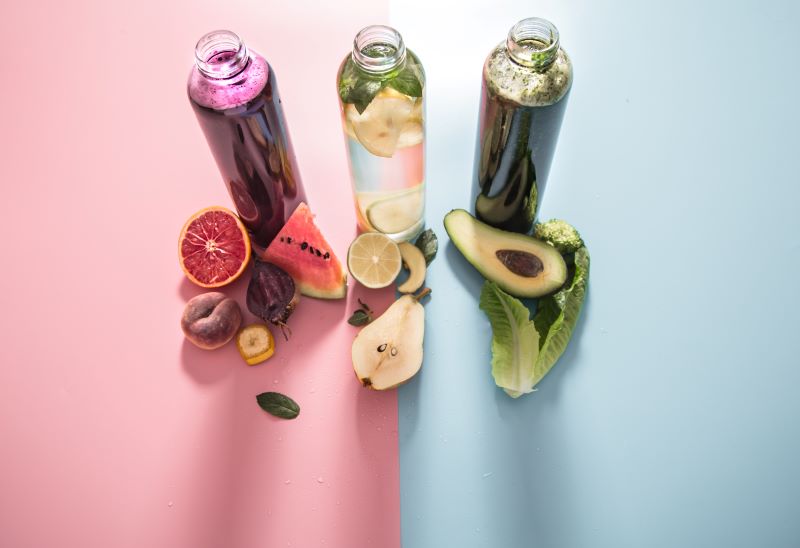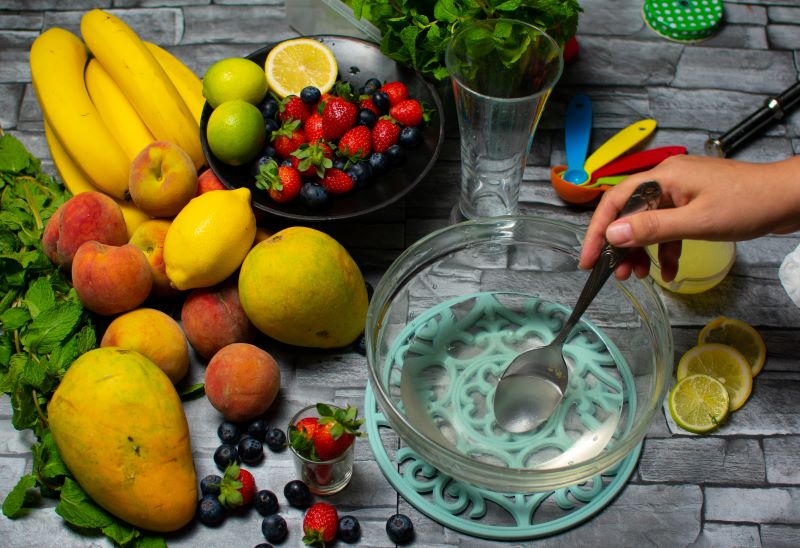21 Best Food Items for Full Liquid Diet

Introducing a complete liquid food plan schedule involves incorporating digestible ingredients slowly, taking off with clear ones through thicker ones, and transferring as many as possible. What wishes to be done here are liquidation, nourishment sustenance, and gadget adjustment as long as this section is concerned, depending on humans' forte and doctor’s directives.
In this guide, we'll explore a range of delicious and nourishing choices that will keep you satisfied and well-nourished during your full liquid diet journey.

Table of Content

What is a Full Liquid Diet?
A complete-liquid weight loss plan is a low-calorie weight loss program composed of beverages or room-temperature meals converted into liquids. It provides numerous benefits and even hastens the healing process following a clinical procedure.
How Does a Full Liquid Diet Work?
A full liquid eating regimen provides effortlessly digestible ingredients and liquids, starting with clear beverages and progressing to thicker options. It offers essential nutrients and hydration, making it appropriate for individuals with digestive problems or those recuperating from surgical procedures.
Medical guidance guarantees personalised instructions for top-of-the-line nutrients and digestive comfort at some point in the transition.
What to Eat During the Day When on a Full Liquid Diet?

Designing an everyday menu entails deciding on foods that offer crucial vitamins, which include protein, carbohydrates, wholesome fat, vitamins, and minerals. Each meal and snack must combine those vitamins to satisfy and energise you for the day.
SNo. |
Meal of the Day | Food Items to Include in a Full Liquid Diet |
| 1 | Breakfast | Blend banana, yoghurt, and a splash of milk or a dairy-loose opportunity. Optionally, add a spoonful of protein powder for additional vitamins. |
| 2 | Lunch | Warm up a bowl of clear broth for a mild and nourishing meal. For a sweet treat, have a small cup of sugar-free fruit gelatin. |
| 3 | Snacks | Mix a scoop of protein powder with milk or a dairy-free alternative for a satisfying, protein-wealthy snack to support muscle repair and growth. |
| 4 | Dinner | Blend cooked greens with vegetable broth till smooth—season with herbs and spices for flavour. |
| 5 | Dessert | Blend milk or a dairy-loose opportunity with a scoop of ice cream or frozen yoghurt for a creamy dessert. |
If you're thinking about adopting a fluid-eating diet, you may find it challenging to begin with because the diet plan requires low-calorie foods. But after some days, you will gradually become used to it.
Fortunately, you can consume various meals following a liquid weight loss plan. Thus, make certain to vary your ingredients and restrict your consumption of foods that are excessive in calories, along with ice cream.
List of Food Items to Include in Full Liquid Food Diet
Everything that is permitted on a clear liquid diet are included below, such as:
SNo. |
Food | Description |
| 1 | Fruit juices | Provides hydration and essential vitamins and minerals from fruits. |
| 2 | Lemonade | Refreshing and provides hydration with a tangy flavour. |
| 3 | Soup broth | Nourishing is easily digestible and provides essential electrolytes. |
| 4 | Gelatin | Easy to swallow, provides hydration, and may help soothe the digestive system. |
| 5 | Honey | Provides quick energy and soothing for the throat. |
| 6 | Tea | Provides warmth and hydration, and can have calming effects. |
| 7 | Coffee | Provides a caffeine boost for energy and warmth. |
| 8 | Popsicles | Hydrating and soothing, particularly for sore throats. |
| 9 | Pureed fruits and vegetables | Easily digestible and provides essential vitamins and minerals. |
| 10 | Strained or pureed soups | Easy to swallow, provides hydration, and can be nutrient-rich. |
| 11 | Milk | Provides protein, calcium, and essential vitamins and minerals. |
| 12 | Strained or pureed meats | Provides protein in a form that's easy to swallow and digest. |
| 13 | Baby food | Specifically designed for easy digestion and often contains essential nutrients. |
| 14 | Cream of wheat | Provides carbohydrates for energy and can be easily digested. |
| 15 | Strained oatmeal | Provides fibre and carbohydrates, and can be easily digested. |
| 16 | Smoothies | Provides a combination of nutrients in an easily drinkable form. |
| 17 | Protein drinks and other liquid nutritional supplements | Provides essential nutrients, particularly protein, for recovery and nourishment. |
| 18 | Ice cream | Provides calories and calcium, and can soothe sore throats. |
| 19 | Milkshakes | Provides calories, protein, and essential nutrients in a creamy, easily drinkable form. |
| 20 | Margarine, butter, and mayonnaise | Adds calories and fat for energy, particularly important for those needing to gain weight. |
| 21 | Pudding | Easy to swallow, provides calories and a creamy texture. |
Foods to Avoid When on a Full Liquid Diet
It's crucial to note what you devour while following a complete liquid food regimen to ensure it fits the policies. Here's a top-level view of the varieties of meals that are normally averted while following a complete liquid diet:
- Whole Fruits and Vegetables: Whole fruits and veggies incorporate fibre and solid additives that may be difficult to digest for some people on a fully liquid food plan.
- Bread, Cereal, Noodles, Rice: These foods are strong and require chewing, which makes them unsuitable for individuals with swallowing problems or those desiring a liquid weight loss program for scientific reasons.
- Soups Containing Large or Hard Chunks: Chunky soups with massive or difficult pieces may also pose a choking chance or be tough for individuals with swallowing difficulties.
- Solid Meat or Fish: Solid meats and fish require chewing and can be difficult for some individuals, particularly those with certain medical or dental issues.
- Foods with Seeds or Hard Particles: Seeds and tough debris can be tough to digest and irritate the digestive tract, especially for people with gastrointestinal problems.
- Nuts and Peanut Butter: Nuts and peanut butter are high in fibre and fats, which may be difficult for some people to digest on a complete-liquid weight loss plan.
- Ice Cream with Chunks: Ice cream with chunks may additionally pose a choking danger or be difficult for people with swallowing problems.
Benefits of Choosing a Full Liquid Diet
Dieters prefer a full fluid diet since it speeds up metabolism, eases stress on the digestive system, promotes better body cleansing, and cuts down on time. One gains from weight loss and general health improvement as a result. Further advantages of liquid diets include the following:
- Digestive Rest: Full fluid diets can give the digestive system a break from processing solid foods. This can benefit individuals recovering from gastrointestinal surgery, experiencing digestive issues, or managing certain medical conditions requiring reduced gastrointestinal activity.
- Easy to Swallow: Liquid foods are generally easier to swallow than solid foods, making them suitable for individuals with dysphagia (difficulty swallowing) or those recovering from throat or mouth surgery.
- Nutritional Support: Despite the absence of solid foods, full fluid diets can still provide essential nutrients, including proteins, carbohydrates, fats, vitamins, and minerals. Nutrient-rich liquids such as soups, broths, smoothies, and fortified drinks can help maintain adequate nutrition when solid foods are restricted.
- Hydration: Many liquids in a full fluid diet, such as water, broth, fruit juices, and smoothies, contribute to hydration. Staying well-hydrated is essential for overall health and can support various bodily functions.
- Weight Management: Full fluid diets may be part of a short-term weight loss or weight management plan. Liquid diets can help control calorie intake and may lead to initial weight loss, although long-term sustainability and nutritional adequacy should be carefully considered.
- Medical Management: Full fluid diets may be prescribed or recommended as part of the treatment plan for certain medical conditions, such as Crohn's disease, ulcerative colitis, diverticulitis, or acute pancreatitis. These diets can help manage symptoms, reduce inflammation, and promote healing in the digestive tract.
What are the Risks of Considering a Full Liquid Diet?
A complete liquid diet has certain advantages, such as resting the digestive system, helping with swallowing issues, and helping with temporary weight control. Still, there are also hazards involved that need to be considered.
A 100% liquid diet makes it very difficult to get enough nutrients, especially over an extended period. Iron, vitamin B-12, thiamine, and vitamin A are generally low in liquid diets.
People who consume a pure liquid diet for prolonged periods may need supplements to avoid nutritional deficiencies.
A diet consisting solely of liquids can provide adequate protein, fibre, and other necessary elements. However, doing so requires some preparation and a basic understanding of nutrition.
Individuals following this diet after surgery might need more motivation or energy to look for nutritious items. The largest risk is that someone might depend on quick and unhealthy meals like high-sodium broths or melting ice cream.
While a full liquid diet can satiate appetites more than a clear liquid diet, sticking to it can still be challenging and frustrating.
For many diseases, doctors may prescribe a full liquid diet; however, recent research indicates that this diet may be more restrictive than necessary.
Things to Consider Before Starting a Full Liquid Diet Plan
When putting together a complete fluid diet plan, consider a few things, such as:
Before adding other liquids or soups, make sure the food you eat has a baby food consistency. This indicates that there shouldn't be any chunks or obvious food particles.
When you drink fluids, consider what your body tells you.
Try to drink and space out your meals throughout the day by 15 to 20 minutes. But if you're having problems drinking enough, that's also a problem that has to be addressed.
Milk, salad dressing, mayonnaise, or water is a good option to get your food before mixing.
Since a complete fluid diet would cause drastic weight loss, it is usually followed for a few days rather than longer. If the doctor advises against it, you may proceed.
Don't put off treatment when experiencing symptoms like nausea, vomiting, diarrhoea, fever, or stomach pain. Rather, give a doctor a call right away. It primarily denotes infections and other related issues.
A full liquid diet is a therapeutic approach to meeting specific medical needs, such as preparing for medical procedures, aiding recovery from surgery, managing certain gastrointestinal conditions, or addressing swallowing difficulties. It offers digestive rest, hydration, and essential nutrients by providing easily digestible liquids and pureed foods.













